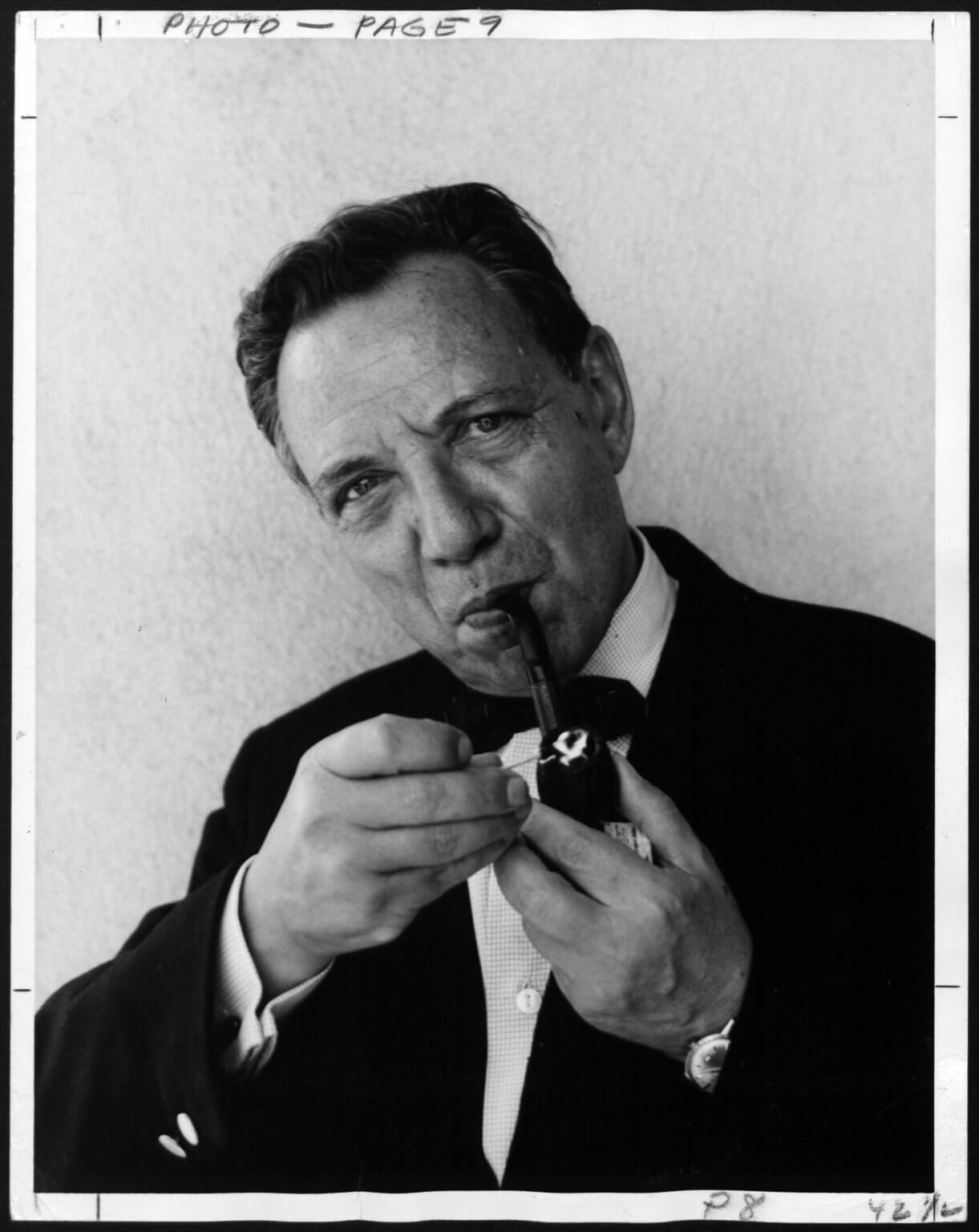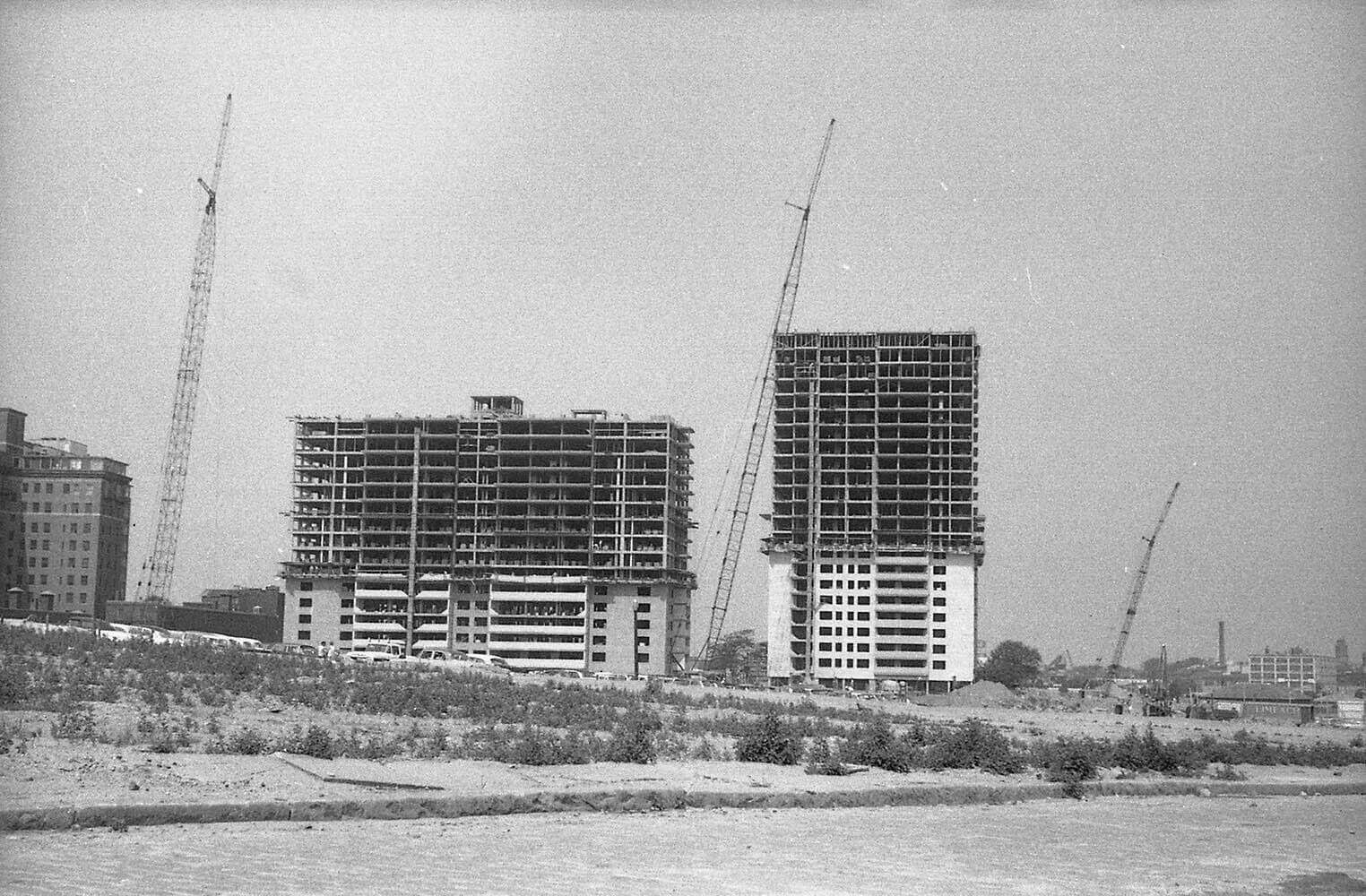Victor Gruen
Victor Gruen was the Austrian-born architect whom Jerome Rappaport, Sr. hired to design Charles River Park, the development that replaced the demolished West End in the 1960s. But Gruen’s work also had national significance as “the father of the shopping mall.”
Victor Gruen was born as Viktor David Grünbaum in Vienna, Austria on July 18, 1903. He trained as an architect in Vienna and opened his own firm in 1933. But in 1938, when Nazi Germany occupied Austria, Gruen, a Jewish man, emigrated to the United States and became an American citizen in 1943. He created a new architecture firm, VIctor Gruen Associates, based out of New York but with plans to develop new projects across the country. Gruen is particularly remembered as the “father of the shopping mall” because he designed the first enclosed shopping centers in the United States during the 1950s. His vision with malls, such as the very first that he built in a suburb of Detroit, Michigan in 1954, was to recreate the communal town square he was familiar with in Vienna. Gruen believed that enclosed shopping centers could be sites for communities of residential buildings, schools, art and entertainment as well as business. Yet he came to regret his architectural progeny once shopping malls contributed to suburban sprawl, which drained the population and tax base of cities; Gruen reflected in a speech in 1978 that “I am often called the father of the shopping mall. I would like to take this opportunity to disclaim paternity once and for all. I refuse to pay alimony to those bastard developments. They destroyed our cities.” Gruen was less ambivalent about the potential for urban renewal to improve downtowns, but his awareness of the unfortunate costs of development can be applied by observers today to another of his designs: Charles River Park.
In 1958, Jerome Rappaport, Sr. and Charles River Park, Inc. hired Victor Gruen, by then an architect of world renown, to revise the city’s initial design for Charles River Park. On May 21, 1958, the Boston Redevelopment Authority approved a contract for consulting services by Adams, Howard & Greeley, “in connection with the Victor Gruen revised Redevelopment Plan for the West End.” Gruen envisioned Charles River Park to be suitable for pedestrians with green spaces and roads isolated from the main thoroughfares of Boston. In 1961, Victor Gruen Associates completed the blueprint for a $55 million plan to build high-rises and townhouses on 45 acres where old West End families once lived. While Charles River Park had the green spaces that Gruen looked for, Rappaport’s promise to provide new housing for West Enders to move back into the neighborhood was never fulfilled. In 1963, Gruen’s $13,500 contract with the BRA came under scrutiny by Thomas Buckley, the State Auditor, because of an alleged conflict of interest: Victor Gruen Associates was prohibited in two sections of the contract from working for the BRA and Charles River Park, Inc. at the same time. BRA Director Ed Logue, in an official reply to the State Auditor’s report, declared that there was no “duplicate, overlap, or conflict” in Gruen’s work for both entities, “nor was there any advantage to be gained…to the Authority by this dual relationship.” Logue, Rappaport, and Gruen shared ambitions to improve cities in order to reverse the deleterious effects of suburban sprawl. But the old West End was not a blank canvas, like the relatively undeveloped land where suburban shopping malls lived, meaning any beautiful designs had to exist atop the razing of a vibrant neighborhood. Charles River Park since existed in ongoing tension with old West Enders, some of whom aired their grievances in the company’s lobby, for this reason.
Gruen retired from architecture in 1968 and ran a foundation for environmental planning. In 1972, he received an architecture award from the City of Vienna, where he returned before his death in 1980.
Article by Adam Tomasi
Source: Encyclopaedia Britannica; Quartz; BRA meeting minutes (1958); Ed Logue reply to State Auditor (1963); Boston Globe










